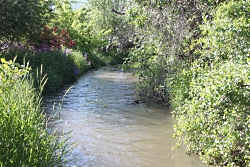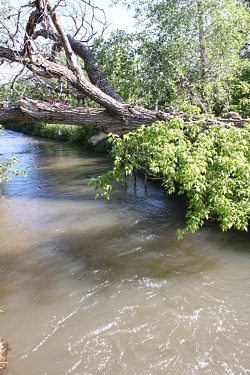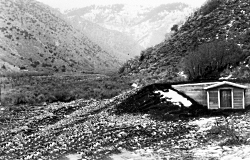
As good Earth Stewards, what can/should we do to use water responsibly? Here are 25 ideas:
- Run kitchen-tap water into pitchers until it is hot before you start your dishwasher. Use that water later for your houseplants or garden.
- If washing dishes by hand, use a container of rinse water rather than letting it run over dishes.
- Try a Navy Shower: Get wet, turn water off, lather up, rinse. Two minutes of water use is all you’ll need.
- Install a water-saver showerhead.
- Keep a pitcher of cold drinking water in the fridge instead of letting the water run down the drain while waiting for it to cool.
- Wash your car on the lawn.
- Use a pistol-nozzle on your garden hose rather than letting it run open ended.
- Use a bucket in your bathtub to catch water until it warms, then use it on plants later.
- Water plants with runoff caught from rinsing fruit and vegetables under your faucet.
- See if your community allows plumbing your gray water directly to your outdoor plants.
- Use a broom, not water, to clean sidewalks and driveways.
- Turn running water off while shaving, washing hands, or brushing teeth.
- Water lawns only in the early morning or late evening, and preferably on windless days.
- Compost fruit & vegetable waste rather than using the garbage disposal.
- Consider replacing your lawn with water-wise plants. If you live in a desert, grow desert plants.
- Run dishwashers and clothes-washers only with full loads.
- Upgrade old toilets with the newer water-saving models
- Make sure that lawn sprinklers never hit driveways, sidewalks, buildings, fences, etc.
- Put your lawn mower on the “highest setting” to conserve water and strengthen grasses.
- Check the policy in your area about using barrels to catch rainwater from your roof to use later on flower beds and gardens.
- Never use running water to thaw frozen foods. Plan ahead, and defrost it in the fridge.
- Fix plumbing leaks immediately.
- Don’t use toilets as garbage cans.
- Save money and resources by avoiding plastic water-bottles. Use your own refillable container for meetings, hiking, etc.
- If you have a pool, cover it when it’s not in use to reduce evaporation loss.
- For dozens of other water-saving ideas go to www.wateruseitwisely.com

Credits:
Images:
Courtesy & Copyright Ron Hellstern, Photographer
Text: Ron Hellstern, Cache Valley Wildlife Association
Additional Reading
Conservation Program, Utah Division of Water Resources,
https://conservewater.utah.gov/
Waterwise Utah, Utah Education Network & Partners, https://waterwiseutah.org/
Water Quality-Conservation, USU Extension, https://extension.usu.edu/waterquality/conservation/
Slow the Flow, Jordan Valley Water Conservancy District & Partneres, https://www.slowtheflow.org/


